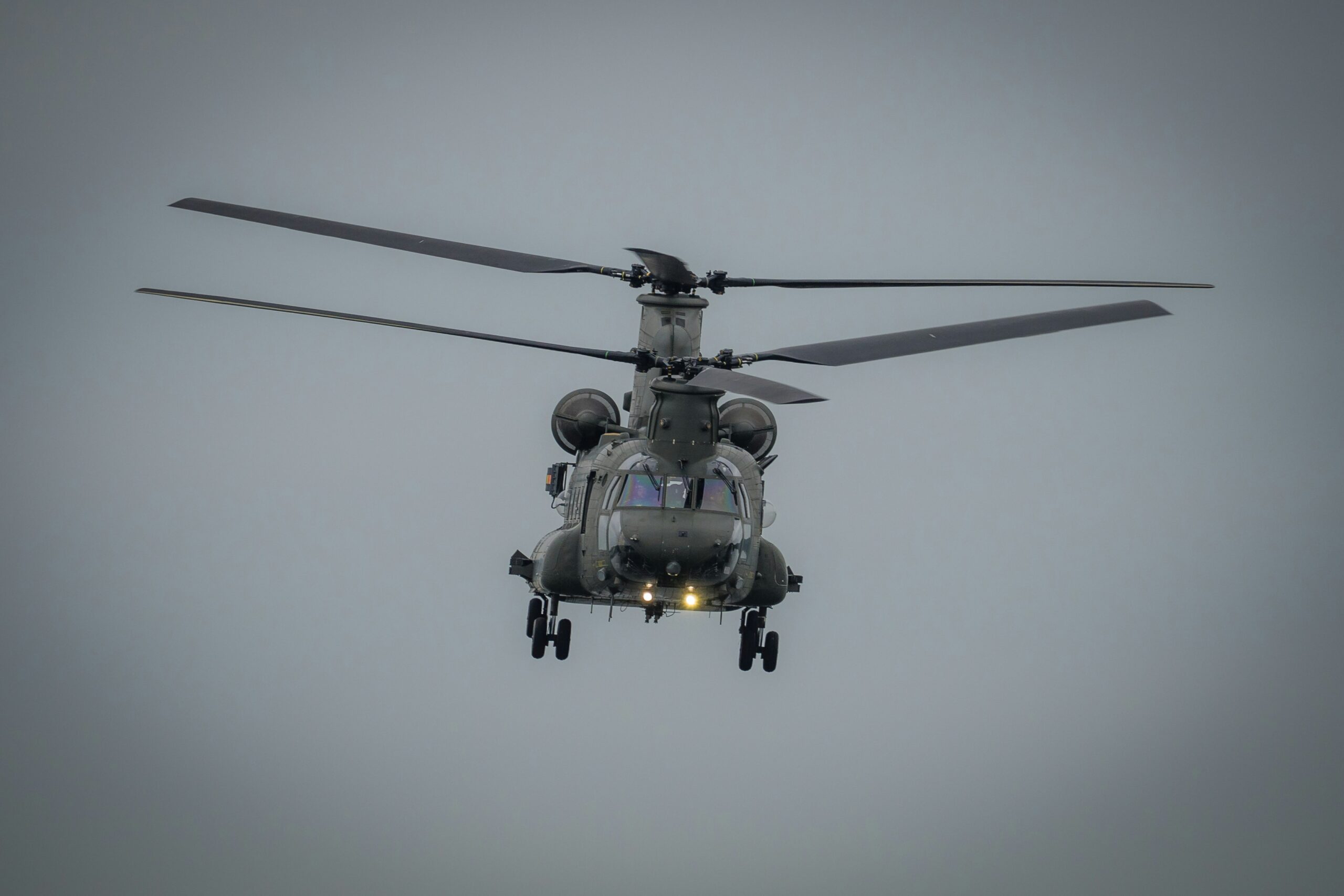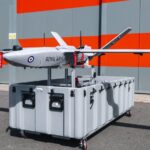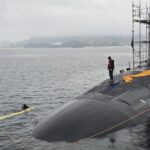Deep planning told commanders they could not wait till convoys caught up. The tank squadrons burn through fuel quick; their gas-turbine motors chew litres faster-than any diesel on wheels. If the front edge stalls you lose tempo, so lift the petrol instead of dragging it.
Airborne Refueling Helicopter Tactics Support Armored Tempo
Off-road tankers, even fresh HX-77 rigs, falter where rock shelves or creek beds slice tracks. A twin-rotor hauler drops in on a flat stretch, ignores gulley walls, and leaves no wheel ruts for drones to trace. That simple choice widens every armored push.
Leaders had skipped fat-cow drills five long years. Tactics evolved, yet crews missed hands-on touch. Re-starting the skill today sets a base before bigger war-games later in July. Nobody wants to relearn with live rounds overhead.
FARP Army Training Resumes Under Realistic Field Conditions
Townsville Field Training Area offered scrub, red soil, and tangled lantana. Staff blocked normal lanes so fuel trucks could not snake in. Instead, they staged the Abrams deep, ordered the Chinook to lift twin bladder tanks, and ran a timetable that looked brutal on paper:
- Touchdown to first coupling: 1 min 30 sec
- Fuel per tank: about 520 L, give or take splash
- Rotor idle kept, no full shut-down
- Dust-off inside six min flat
Not a second wasted, crew chiefs said later. Timers clicked, hoses coiled, big bird gone again.
How the Fat-Cow Kit Works
The aircraft rolls two fabric bladders inside its cavern cabin. Pumps bolt to deck rings, drawing power from an APU tap. Twin hoses snake out the ramp, snap to dry break nozzles, and reach armor waiting ten meters off tail. That gap stops gravel spray sand-blasting optics.
Chinook Fat-Cow System Mechanics in Fuel Delivery
Grounders clip static wands first. Sparks plus vapour is bad news. They loop safety cords round tow lugs, crack the valve slow, and watch flow glass for bubbles. Noise is wild; signals run by hand, not radio.
Queensland autumn hits 33 °C by noon. Single-rotor birds sag in that heat, yet the CH-47 twin disk shoves enough downwash to hold ten-tonne loads. Turbine temps climb, but engineers track every rise on a tablet. If limits edge close, they drop power one notch rather than risk a hot-section crack. Similar concerns about robustness arise in other heavy‑lift fleets — for example, Canada queries the effectiveness of its maritime helicopter support in austere environments.
CH-47 Chinook Performance in Extreme Terrain and Heat
Lift speed matters more than cruise. The hauler leaps twenty klick in four min, hits the hide, dumps fuel, and scoots. Ambushers with shoulder tubes must guess fast; odds tilt to the pilot instead.
Managing Abrams Tank Fuel Consumption in Tactical Operations
A sixty-ton platform that sprints will guzzle near 300 L each hour on the move. Idling still eats loads: thirty-eight litres vanish per idle hour. Filters clog with talc dust; burn climbs another notch. By sunset one troop empties a highway tanker. Recent deliveries of Abrams tanks to allied nations such as Poland underscore the importance of effective fuel logistics for armored units.
Airborne resupply chops the wait. Tanks keep pace with infantry in light APCs, not stuck nursing a red reserve light. Combat tempo stays sharp.
Terrain Challenges Faced
The training ground threw basalt rock runs, marshy flats, and sudden cuttings. Truck drivers could have winched across, but that drags half a day and leaves tyre tracks bright on UAV feeds. Rotor delivery skims over such traps.
Grader squads sat idle; no blade pushes needed. Less earth-moving equals fewer signals to hostile satellites. Even exercise umpires admitted the low footprint felt clean.
Safety Measures Applied
No big lectures, just checklist cards taped inside cargo pockets. Two crew secure the bird, one holds a nine-kilo extinguisher within arm’s reach. Medics stack burn gel, eye-wash bottles and saline boxes on a fold table nearby.
Static cable touches first metal seen, then fuel runs. If rotor wash flings loose sand into goggles, troopers retreat five steps, flush fast, and jump back. Rhythm never breaks longer than ten seconds.
Communication and Coordination
Blue Force tracker shows tank icons on cockpit MFDs. Data rides Link-16 bursts; when satellite dips, ground repeater kicks in. Pilots call status with plain terms: green, amber, red. Encryption guards details, but brevity keeps chatter light.
If jamming roars, crews flip to backup VHF and push through static. Everyone drills that swap till muscle memory nails it.
Training Benefits Logged
Most troopers wore armor suits yet had never touched a live fat-cow line. First coupling felt clumsy; second run sliced forty seconds off; by last pass the hose snapped home near perfect. Muscle sets in organic, not classroom sterile.
Confidence lifts. Tankers know blades back them up. Aviators see armor survive due to their run. Cohesion grows silent.
Weather Effects Noted
Afternoon sea breeze twisted dust whirls across the pad. Rotor flow drove brown-out for the last ten metres. Ground guides waved chem-light paddles, red side toward pilot, green face to rear. Visibility dipped but no halt ordered.
Thunderheads stalked south ridge; lightning rule sits fifteen klick. Cells drifted but never closed. Drill concluded ten minutes before first drop fell.
Maintenance Checks Post-Sortie
Engineers ran a borescope through hot-section blades, looking for sand pits. Minor specks got polish paste; deeper digs earn epoxy filler. Fast fixes avoid full blade pulls. Tanks flushed fuel filters to purge grit, wiped periscopes with lens tissue, and re-greased hatch seals.
Combined tasks share spares bins now, trimming freight loads. One logistics sergeant joked his shelves finally breathe.
Logistics Chain Impact
Jet-A1 in the sky costs dollars; broken axle on a road tanker costs more. Repair teams swap struts for days; flight crews burn kerosene and move on. Exercise analysts penciled break-even at seven air refuels a week; nine landed in logbooks already, nudging math in favor of rotor.
Environmental Controls Kept
Grounders spread absorb mats under every coupling. Spill kit stayed on ramp. Soil samples after run showed no hydrocarbon spike above baseline. Environmental policy bites even during war play; chain of command enforces.
When wind wafted vapour toward crew line, supervisors paused flow five seconds, shifted hose angle, kept on pumping. Discipline echoed factory grade.
Forward Path
Next proving step hits Exercise Talisman Sabre mid-year. Scenario layers jamming, artillery, and night conditions. Chinooks will land lights-out, guided by infrared strobes seen only through NVGs. Abrams will idle in blackout mode, lowering turbine glow.
Small drones may scout landing zones first, ping exact grids back. That link chops hover search that wastes precious seconds.
Allied Observers
US I Corps and New Zealand armor reps filmed every lap. Pacific partners wrestle similar terrain; they see value. Talks circle around cross-deck trials where Aussie rotors top off Marine Corps tanks or inverse. Standard fittings ironed now save chaos later.
Technology Updates Pending
Defence science units test lighter carbon-fiber hose reels. Shedding thirty-percent weight frees payload for spare road-wheels or ammo cans. Digital flow meters slated to beam litre count direct to cockpit tablet. Crew then knows to cut pumps the instant tanks brim.
Medical Aspects Covered
Rotor wash throws grit; eye stations ride under awning close by. One gunner caught a cornea scratch, rinsed quick, returned to post. Hydration tablets sat chilled; two troopers cramped mild, medics stretched hamstrings, re-hydrated, cleared them.
Fire Support Integration
Counter-battery radar fed shell plots straight to the aircraft net. If hostile tubes flared, pilot saw trajectory before first burst. Chinook could skip one grid right without waiting orders, slicing exposure time. Artillery chiefs happy; survivability margin ascends.
Night Operations Demonstrated
LED strips under ramp lip cast faint red glow, hiding signature yet framing couplings. Trial at 2300 hrs locked lines first try. Radios muted; hand signals ruled. Owls flitted over rotor circle then vanished.
Data Capture for Lessons
A rugged cam fixed on tail bulkhead recorded every motion, time-stamped to the millisecond. Analysts slow footage, pinpoint glove slips, tweak drills. Video beats scribbles; nuance appears crystal.
Files auto-sync to secure mesh once bird crosses base antenna cone. Clerks breathe easier; manual uploads vanish.
Strategic Implications
Helicopter tank refuel pushes armored reach outward. Peer foes plan to chop ground lines; airborne petrol leaps that axe. If fixed depots take missile hits day one, mobile teams keep steel rolling day two. Flex buys decision-makers time.
Doctrine cell drafts new note for Land Warfare Pub 5-5-2. When signed, every troop card will list forward refuelling technique next to ammo tally. Standard soon, not novelty.
Conclusion
Townsville’s run restarts a skill set shelved too long. Tanks no longer wait for rutted roads to clear. Twin rotors settle, hoses gush, armor moves. Small kit tweaks will shave more seconds, lighter reels will fly, and allied crews will fold into the rhythm.
Battlefield fuel reach just stepped wider, giving Australia’s heavy punches the legs they sorely need.
REFERENCE SOURCES:
- https://www.defence.gov.au/news-events/news/2023-04-11/chopper-refuels-thirsty-tanks
- https://www.defenceconnect.com.au/land/11772-adf-chinook-completes-fat-cow-refuelling-of-abrams-tanks
- https://www.shephardmedia.com/news/training-simulation/australian-soldiers-to-practice-tank-refuelling-with-chinook-helicopter/
- https://www.asianmilitaryreview.com/2023/04/australian-army-returns-to-heliborne-refuelling-operations-for-tank-operations/
- https://www.themandarin.com.au/217789-fat-cows-deliver-farps-for-army/



